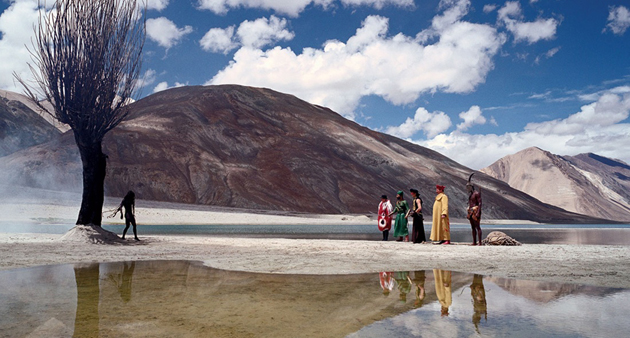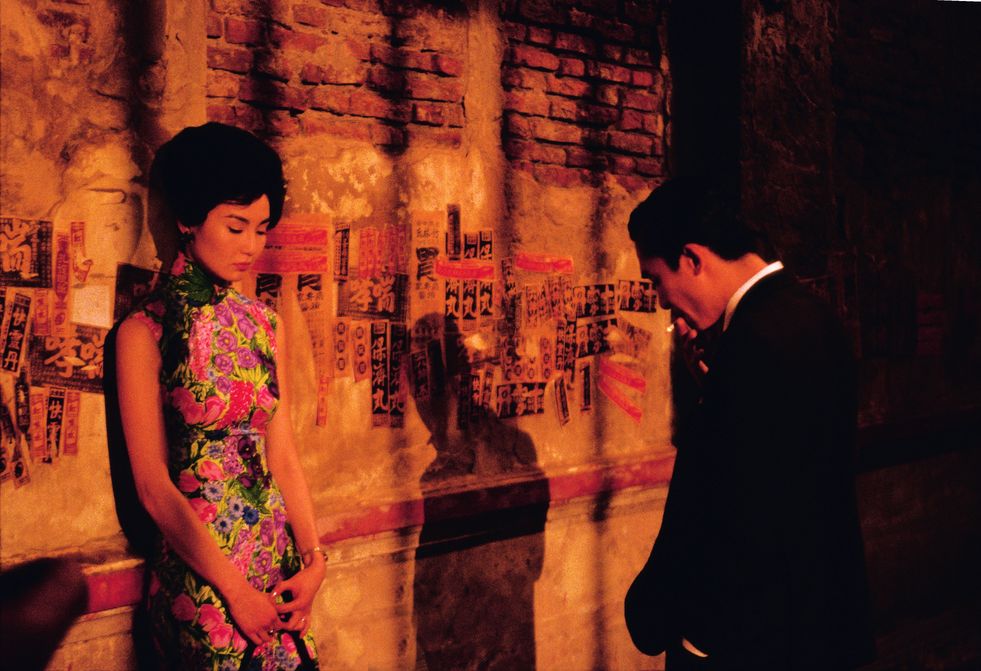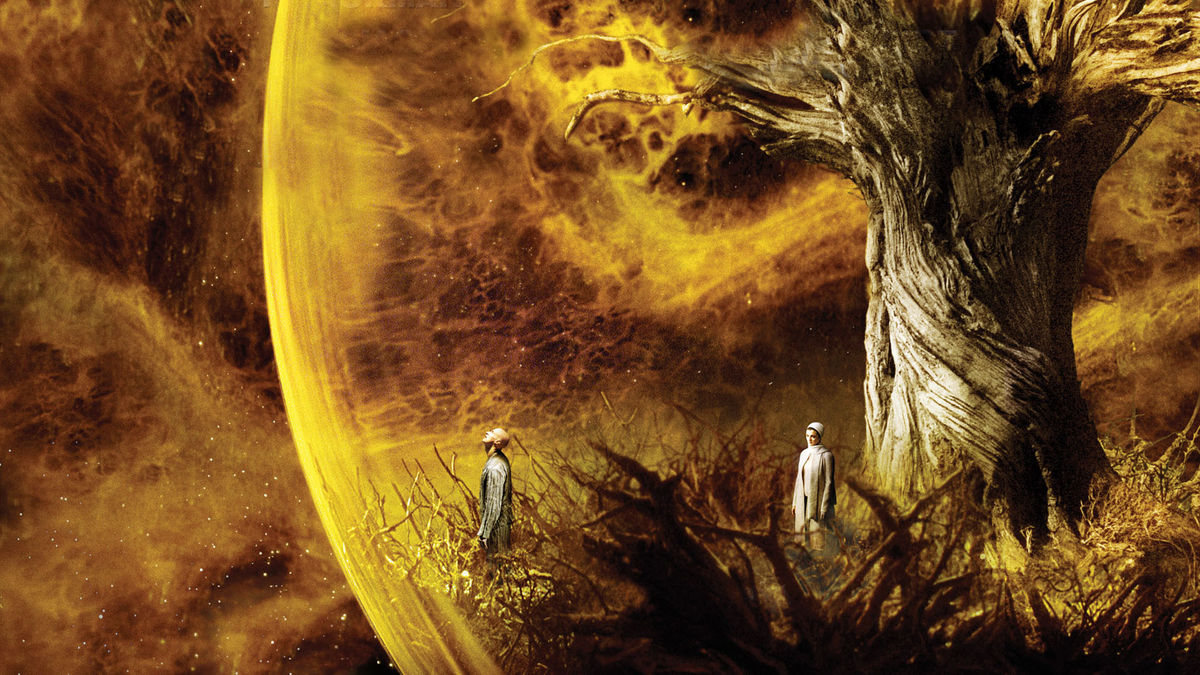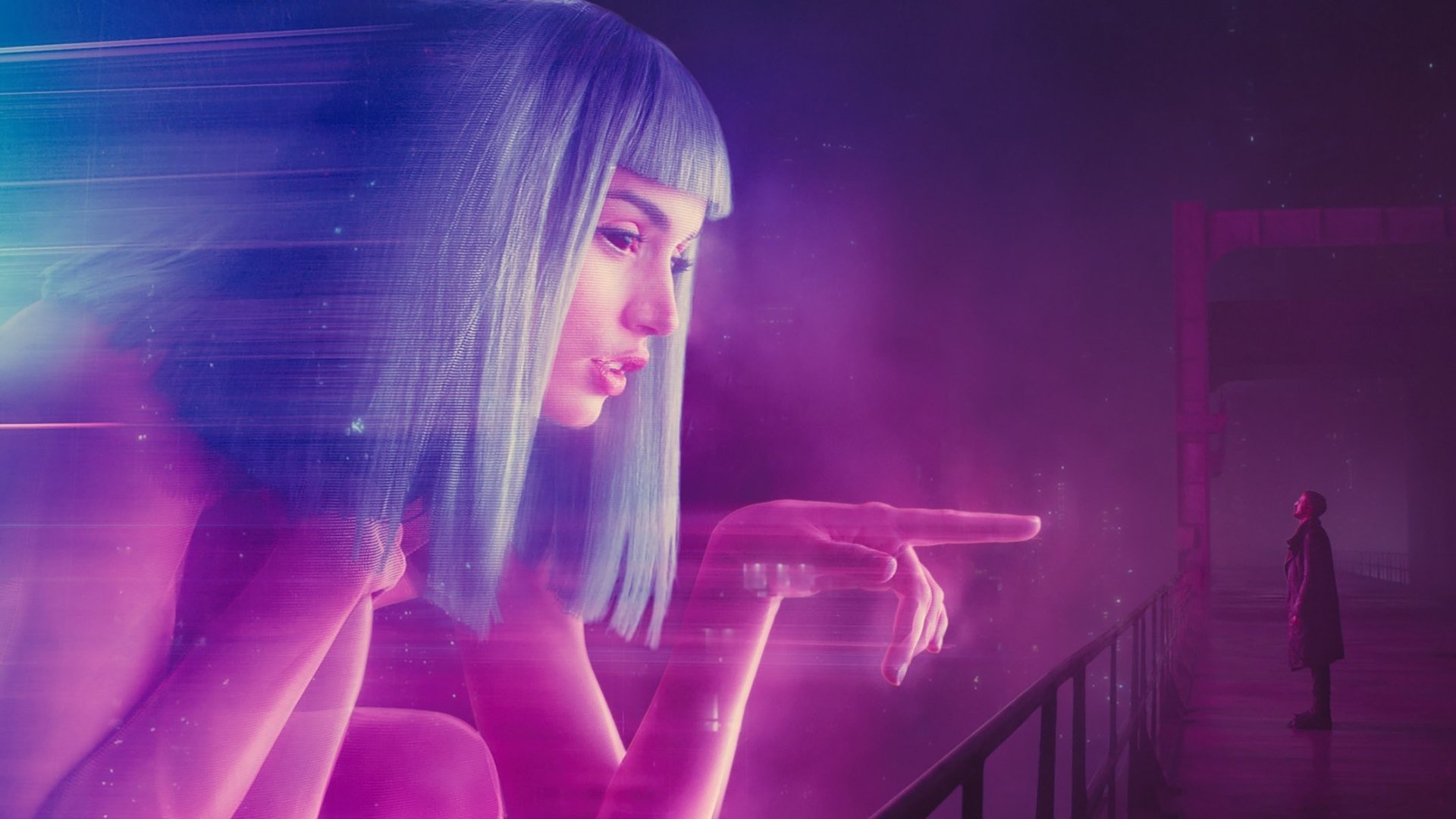5. The Fall (2006)

This movie is a living painting. It is a movie envisioned and created by Tarsem Singh, which may be too ambitious for its own right. Four years of production and 28 countries providing the filming locations make the movie a true visual extravaganza.
The plot is separated between the real world, set in a 1920’s hospital where a paralyzed and emotionally unstable stuntman is approached by a girl, urging him to tell her a story, and the fantastic world as told by him and visualized by the girl’s vivid imagination.
The plot lacks conventional narrative, switching between reality and fantasy often, losing some impact in the process. While not necessarily a bad thing, the film ”chooses” visuals over plot building and character development, which one might say is its biggest flaw.
It crams so many gorgeous visuals, vivid colors and surreal imagery in the picture that the viewer slowly loses sight of the actual plot and the characters’ purpose. While one might say that the scenario lacks some punch and gets drifted away as the movie unfolds, one cannot argue that the visual and aesthetic aspect of the film is simply otherworldly.
Its pictures and Colin Watkinson’s cinematography literally bring an overactive imagination to life. Projecting the thoughts and images created by a child’s fantasy is truly hard to accomplish. Moreover, because it is filmed in so many locations and countries around the world, it glorifies natural beauty, landscapes and the distinct culture of every country perfectly.
Another great stylish approach apart from stunning traditional costumes and surreal imagery is that the intensity of colors changes depending on narrator’s mood. The girl feels the narrator’s ups and downs that affect her feelings, too. So, the movie, which essentially follows the girl’s envisioning, “adjusts” accordingly.
This is by no means a perfect film, overflowing itself and becoming too visual at times. Yet it is an experience worth discovering and a stylistic tapestry of earth’s beauty and its inhabitants cultural aspects.
4. Amelie (2001)

This is no film. This is poetry. After watching this film you feel light, as if the wickedness and hatred has left this world. Even if it is for just a second, you feel truly happy. Such is its power and influence.
Our beloved form of art, cinema, is packed to the brim with bleak, grim and violent movies. Of course it is understandable, because it’s just a bleak world we live in. Yet once in a while it is truly refreshing, watching a ray of hope in the haze. “Amelie” manages such a difficult task without being a silly, distracting and mindless comedy. That would have been an easy task not worth any praise.
“Amelie” overflows the audience with a sincere light, an ephemeral yet profound positivity, reminding us that a good deed doesn’t cost a thing and even the smallest of actions count. Still, no matter how much positivity and virtue it tries to pass on, it never becomes preachy or pushy.
The movie concentrates on Amelie, a sweet and naive Parisian girl, portrayed wonderfully by Audrey Tautou, as she constantly tries to help those around her and “punish” the unjust. However, because she always puts other people’s needs above hers, she has never discovered love, constantly feeling lonely and insecure. Everything is about to change when she meets Nino, played by Mathieu Kassovitz.
Amelie, with her naiveté and altruism, and her wild imagination and kindness, is such an endearing character, constantly reminding us of how human relationships should be.
Jean-Pierre Jeunet strikes again with his unparalleled style, directing and dialogue. Paris never seemed more beautiful and charming. The uses of yellow and sepia filters succeed in their purpose triumphantly as they induce a heartwarming, bittersweet nostalgia prompting the viewer to recall their childhood, freedom and lost innocence.
Of course, nothing in the movie would fit so perfectly if it weren’t for Yann Tiersen’s magnificent film score. Unmistakably, this will be a immortal film score, one that defines cinema as a whole. It feels like the movie and the score are two different entities, relying on each other to create something truly unique.
Of course, Paris has always been the epicenter of fashion, good taste and finesse, and the movie utilizes those aspects perfectly. Yet it is the ability of Jeunet to create colorful worlds, real or fictional, that feel alive, as if they had a pulse. Every interior set, house and street is created with immense detail, matched only by Wes Anderson in modern cinema.
An absolute classic, an absolute must.
3. In The Mood For Love (2000)

This is one of those movies that make you wonder if true romance is still possible.
Wong Kar-wai’s most famous film is probably his best as well. It is a stunning movie about love in a very unconventional and ”non-Western” way, yet it also serves as social commentary for human relationships in general. What is even more remarkable is the depiction of 1960’s urban Hong Kong in immersive detail.
Recreating accurately a past era is no easy feat, and In the mood for Love is a stand out example of how movies can be literal time machines.
The plot follows two neighbors, Mr. Chow (played by Tony Leung) and Mrs. Chan (played by Maggie Cheung), who recently moved in a crammed building with their spouses. However, they quickly discover that his wife and her husband are having an affair, pretending to work overseas or nursing an ill parent. Mr. Chow and Mrs. Chan, lonely and hurt, find comfort in each other’s company, spending more and more time together. When they start growing feelings for each other, however, they decide they won’t be like their cheating spouses.
The scenario is simply brilliant. A platonic love affair, triggered by circumstances and fueled by desire is not something you come across every day. The relationship between the two protagonists was doomed from the start. Still, while they knew it could never last, they kept going.
Well, it doesn’t get any more romantic than that. Romance is depicted by modern mainstream movies mainly through clichés like gratuitous sex, passionate kisses in the rain over melodramatic music, love triangles, multiple separations, etc. While not necessarily bad, these tropes are way overplayed and regurgitated. What this movie provides is honesty.
Wong exceeded himself in terms of sets, wardrobe choices and every other little detail dug into the film immersing the viewer in an uncharted world and era. The crammed, rundown apartments with shared kitchens, nosey neighbors, the dresses worn by Cheung’s character, the working and eating environments, the food are some examples of what makes this movie so stylish, gorgeous and timeless.
Its depiction of 1960’s Hong Kong makes everyone nostalgic (or at least engrossed by) about the era, which is pretty strange and remarkable if you think about it, considering the fact that most of the audience knows nothing about the era, let alone experienced it.
Also, technically speaking the movie is flawless. Wong’s emotional directing, with his signature hyperkinetic and slow motion camera work, as well as his color choice, with his palette emphasizing mostly on red (as an allegory for burning desire and passion) are a sight for sore eyes.
Of course, nothing would be so beautiful if it weren’t for Christopher Doyle’s (among others) cinematography, Shigeru Umebayashi’s and Michael Galasso’s (among others) wonderful film score, which is used as a motif throughout the movie, and the subtle yet so emotional performances by the two leads, who created genuine chemistry.
When all is said and done, one would not expect anything less from a master of the craft like Wong.
2. The Fountain (2006)

One cannot easily talk about this movie, let alone recommend it, either because of its complexity or its meaning. The movie is not for everyone, that’s for sure. But the ones who ”agree” with it probably don’t talk about it as it sinks deep inside their soul, becoming one with them.
This is one of the few movies that can literally scar you for life. Darren Aronofsky’s most underrated movie, and arguably his best, is simply soul crushing.
No other movie in the history of cinema deals with mortality and death in such a profound way. And yet, even if it is drenched in sorrow and tragedy, the central theme is love. Undying love that transcends death itself, withstanding time.
The complexity of the plot matches the rest of the movie, which is truly difficult to describe with words. Keeping it simple, however, one could say the plot revolves around three different men through the course of time, searching for a way to save their loved one and confront time.
The first one is a conquistador in the 16th century Mayan civilization, searching for the tree of life to save a queen; the second one is a medical researcher in 2005, studying trees, desperately searching for a cure for his terminally ill wife. The third one is a wanderer in 2500, travelling through space with an aged tree seeking eternity.
And the plot synopsis doesn’t get any simpler than that.
The movie is a visual marvel, a true testament of art with colossal emotional impact. Yet it was not well received, being highly controversial upon its release due to its directing and arthouse aesthetics. Aronofsky is more than a visionary director. He sees beyond norms and rules, never fearing he will be criticized as pretentious. The directing and screenplay shift between realism and abstract imagery, combining drama with sci-fi perfectly.
The plot spans between thousands of years, giving Aronofsky the chance to enhance the visual style of each period differently. Every color has a symbolic value with his palette mainly consisting of gold and yellow, symbolizing hollow materialistic beauty and meaningless wealth; green symbolizing nature; and black and white symbolizing death and life/truth.
Style and philosophy become one, the boundaries between genres blur and what starts out as a romantic drama becomes a contemplation on death, mortality, immortality, and the significance of love. Can love be eternal or is everything futile? Do we just live, love and die as everything fades to black?
The cinematography by Matthew Libatique is beautiful and especially memorable as it embraces Aronofsky’s vision of not using conventional CGI for the third plotline, but micro-photography of chemical reactions to depict nebulas and space in general.
What probably ties together the whole movie, however, is the haunting score by Clint Mansell. Loss and tragedy, hope and redemption are mere fragments of the emotional impact of the score.
Aronofsky said he was inspired by Kubrick’s “2001:A Space Odyssey” (1968) and “The Matrix” (1999), and the resemblance is uncanny. These are three essential movies that prove that style can maximize the impact of sci-fi. Arousing the visual and optical senses is a key factor for passing a meaningful contemplation through.
1. Blade Runner 2049 (2017)

How would you like a trip to the future? Well, that doesn’t seem like a bad idea initially, but if you would care to follow director Denis Villeneuve to the not-so-distant time of 2049, you would find yourself in a very bleak reality indeed.
Even though the world of science fiction is acquainted with the universe of “Blade Runner” from the 1982 original movie, this sparkling new sequel takes a new spin on the classic with a different stylistic approach, but without letting go of the elements that gave the first movie its cult character and numerous fanatics.
So, witness blade runner K, pursuit lead after lead, dodging all manner of dangers, to the most astonishing truth about replicants, a truth that has the power to completely transform the current state of the world. While at it, you might as well admire the excellent, award-winning cinematography of Mr. Roger Deakins, one of the main reasons for the incredible style of this film.
The reason this movie made this list lies to more than just the incredible costumes and the amazing, realistic urban architecture of that dark vision of the future. One cannot overlook the presence of the ethereal actresses, but most importantly, the palette and the colours, which are out-of-this-world and masterfully create the most attractive ambience. Finally, in this movie, some of the most astounding cinematic images ever have been crafted.
Through the sheer genius of the creators, natural phenomena like sandstorms and snow have been elevated to tools for the most incredible aesthetics, endowing the viewers with scenes such as the discovery of Rick Deckard’s hiding place among the gigantic erotic statues of a derelict Los Angeles.
Author Bio: Diamantakos Yannis’ main studies consist of economics and law. Although he didn’t have the opportunity to study filmmaking like he always wanted, his passion for cinema, developed in a young age, never waned. On the contrary, it never stopped growing. He has been making lists and reviewing movies for years in his own website and is more than eager to disseminate his unceasing infatuation with cinema and its unparalleled magic.